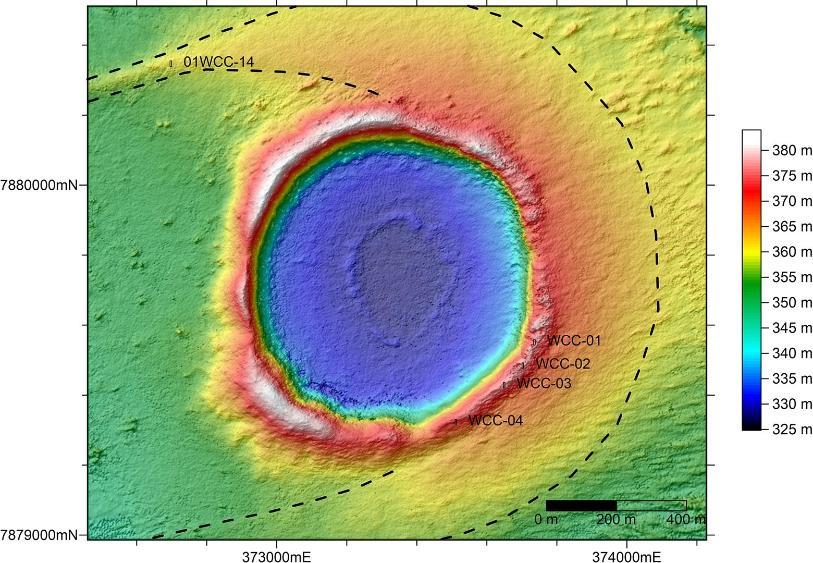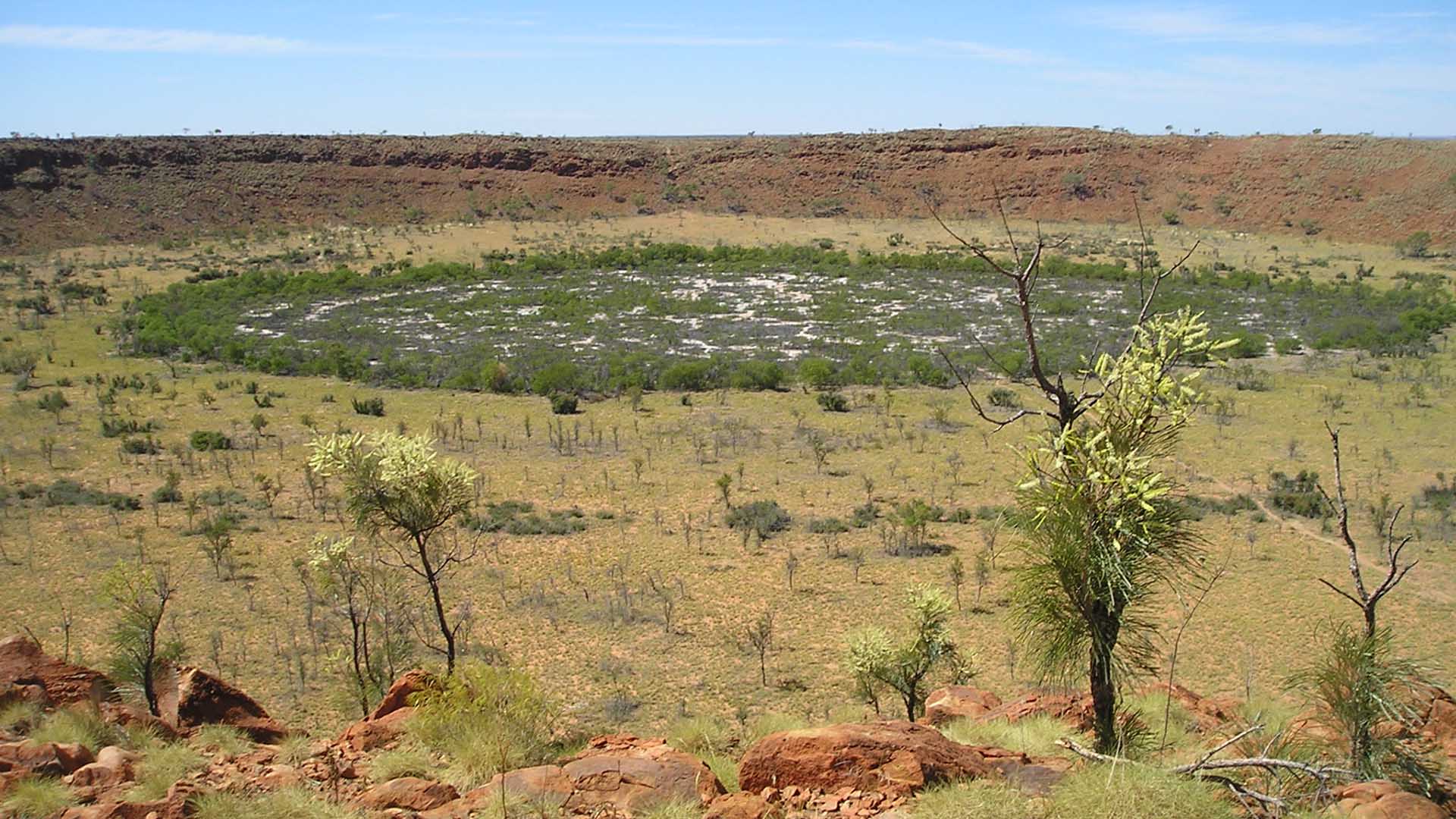November 20, 2019
New study reveals secrets of Wolfe Creek Crater
Meteorite impact site much younger than previously thought
A study by an international research team led by Professor Tim Barrows from the University of Wollongong has thrown new light on how frequently large meteorites strike the Earth.
The research focused on Wolfe Creek Crater, one of the largest meteorite impact craters in Australia and the second largest on Earth from which meteorite fragments have been recovered (the largest is Meteor Crater in Arizona in the United States).
Located in a remote part of Western Australia, on the edge of the Great Sandy Desert and about 145 kilometres from Halls Creek via the Tanami Road, Wolfe Creek Crater was formed by a meteorite estimated to be about 15 metres in diameter and weighing around 14,000 tonnes.
The meteorite was probably travelling at 17 kilometres per second and struck with the force of 0.54 megatons of TNT.
Just when that impact occurred, however, had not been well understood.
The new study, published in the journal Meteoritics & Planetary Science, found that the impact most likely occurred around 120,000 years ago – much more recently than the previous estimate of 300,000 years ago.
Debris from outer space constantly bombards the Earth, but only the biggest objects survive the journey through the atmosphere to hit the planet’s surface and leave a crater. Having an accurate age for the Wolfe Creek Crater impact enabled the researchers to calculate how frequently such impacts occur.
Including Wolfe Creek Crater, there are seven sets of impact craters in Australia dating to within the past 120,000 years, said Professor Barrows, a Future Fellow in UOW’s School of Earth, Atmospheric and Life Sciences.

Professor Tim Barrows from UOW’s School of Earth, Atmospheric and Life Sciences, whose research on Wolfe Creek Crater has given as a more accurate understanding of how frequently large meteorites impact the Earth.
“Although the rate is only one large meteor hitting Australia every 17,000 years, it isn’t that simple,” he said.
“The craters are only found in the arid parts of Australia. Elsewhere, craters are destroyed by geomorphic activity like river migration or slope processes in the mountains. Since Australia has an excellent preservation record with dated craters within the arid zone, we can extrapolate a rate for the whole Earth.
“Taking into account that arid Australia is only about one per cent of the surface, the rate increases to one every 180 years or so.
“This is a minimum estimate because some smaller impacts were probably covered by sand during the ice age. The number of large objects is probably 20 times this number because stony meteorites are far more common but not as many survive the fiery journey through the atmosphere or effectively make craters.
“Our results give us a better idea of how frequent these events are.”
Professor Barrows and his colleagues used two techniques to date the crater: exposure dating (which estimates the length of time a rock has been exposed at the Earth's surface to cosmic radiation) and optically stimulated luminescence (which measures how long ago sediment was last exposed to sunlight).
The researchers also created a new 3D topographical model of the crater using aerial photographs taken by Ted Brattstrom, a Hawaiian high school teacher who flew over the crater in 2007 taking photos of it from a number of different directions. They used this to calculate the crater’s dimensions.
“We calculate that the maximum width of the crater is 946 metres in a NE-SW direction, reflecting the direction of the impact. The average diameter is 892 metres. We predict a depth of 178 metres and that it is filled by about 120 metres of sediment, mostly sand blown in from the desert,” Professor Barrows said.
Using the same geochronological dating techniques, the researchers were also able to recalculate the age of the Meteor Crater in Arizona. They found it is likely to be 61,000 years old, more than 10,000 years older than previously thought.

An orthophoto of Wolfe Creek Crater. An orthophoto is an aerial photograph that has been geometrically corrected so that the scale is uniform and the photo has the same lack of distortion as a map.
ABOUT THE STUDY
‘The age of Wolfe Creek meteorite crater (Kandimalal), Western Australia’ by Timothy T. Barrows, John Magee, Gifford Miller, and L. Keith Fifield is published in Meteoritics & Planetary Science.
The United States National Science Foundation, Australian Research Council, and the Australian National University funded the fieldwork at Wolfe Creek Crater.
The researchers thank the Aboriginal elders in Billiluna for permission to conduct research in and around Wolfe Creek Crater and assistance with fieldwork; the WA Department of Conservation and Land Management for technical permits for research in and around the crater in 2001; and Ted Brattstrom (Ka'u High School, Hawaii) for providing aerial photography.
